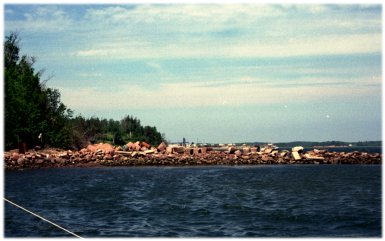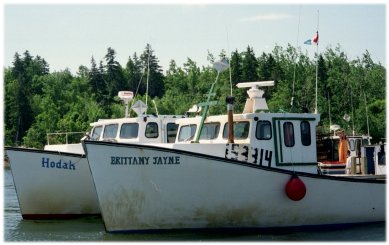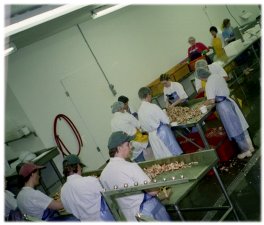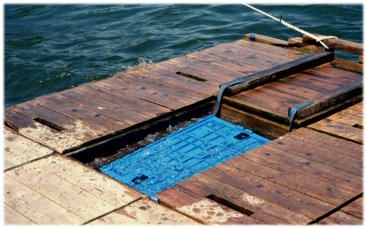|
|
|
|
||
|
A
Day-in-the-Life Snapshot of the Industry: At the Plant After the lobsters are hauled from the sea and weighed and crated at the wharf they travel in large trucks to various destinations across Nova Scotia and New Brunswick. The lobsters and crabs landed by Ronnie Langille at Skinnerís Cove are sold to North Nova Seafoods, a processing plant owned by Paul Logan and located in Bayview, a small community outside the town of Pictou. North Nova Seafoods I visited North Nova On June 28th, 2000 and spoke with North Nova
employee, Marion MacDonald. Marion
is the wharf manager of Loganís wharf, a private wharf owned by Paul Logan and
located on the same site of his plant. Approximately 20 boats are tied up at Loganís wharf.
Marion talked with me about the company and the role they play in the
north shore fishery.
North Nova acts as a middleman in the lobster industry. It buys lobster from the fishermen and then sells it to other companies and processing plants throughout Nova Scotia, New Brunswick, the United States and Europe. Approximately 40 Ė50 fishermen at 5 wharfs, Skinnerís Cove, Pictou Island east and west, Barrachois and Sinclaire Island, supply the plant with lobster and rock crab. The rock crab is processed in the plant and the lobster is kept in holding tanks to be sold live. North Nova only buys lobster from LFA 26A whose lobster season ends at the end of June. They process rock crab throughout the spring and all through the summer, and herring roe in the fall. The plant employs about 40-50 people.
About 99% of market lobsters are shipped live from North Nova to the United States, and canners are shipped mostly to Europe. The lobsters are held in holding tanks for 2-3 days before being shipped. This time allows for the bait, digested by the lobster while in the trap, to disappear producing a more flavorful and thus more marketable lobster overseas. On this particular day the price for a market lobster is $6.50 per pound and the price for a canner lobster is $5.25 per pound (Canadian dollars). The price fluctuates throughout the season due to supply and demand and the competition of the market. There is no one person who decides what this price will be. Companies must compete against each other for the fishermenís business which results in the increase and decrease in prices. For example, if one company is buying lobster from a fisherman at a higher price, then its competitor will raise its price as well, in order to stay competitive. Holding tank
The holding tanks are stationed beside the wharf, and down the road a short
distance from the plant. By
climbing down a short ladder you reach the wooden platform which is a floating
dock. If youíre not careful you
could end up in the ocean in just a few small steps!
A small wooden shack sits in the middle of the float where weighing is
done. Itís hard to believe as you
walk around the float that you are actually walking on top of hundreds of
lobsters. They are hidden under the
platform in plastic trays and are covered so the lobsters canít escape.
The float is divided in to sections for canners and markets.
|
||||
|
|





